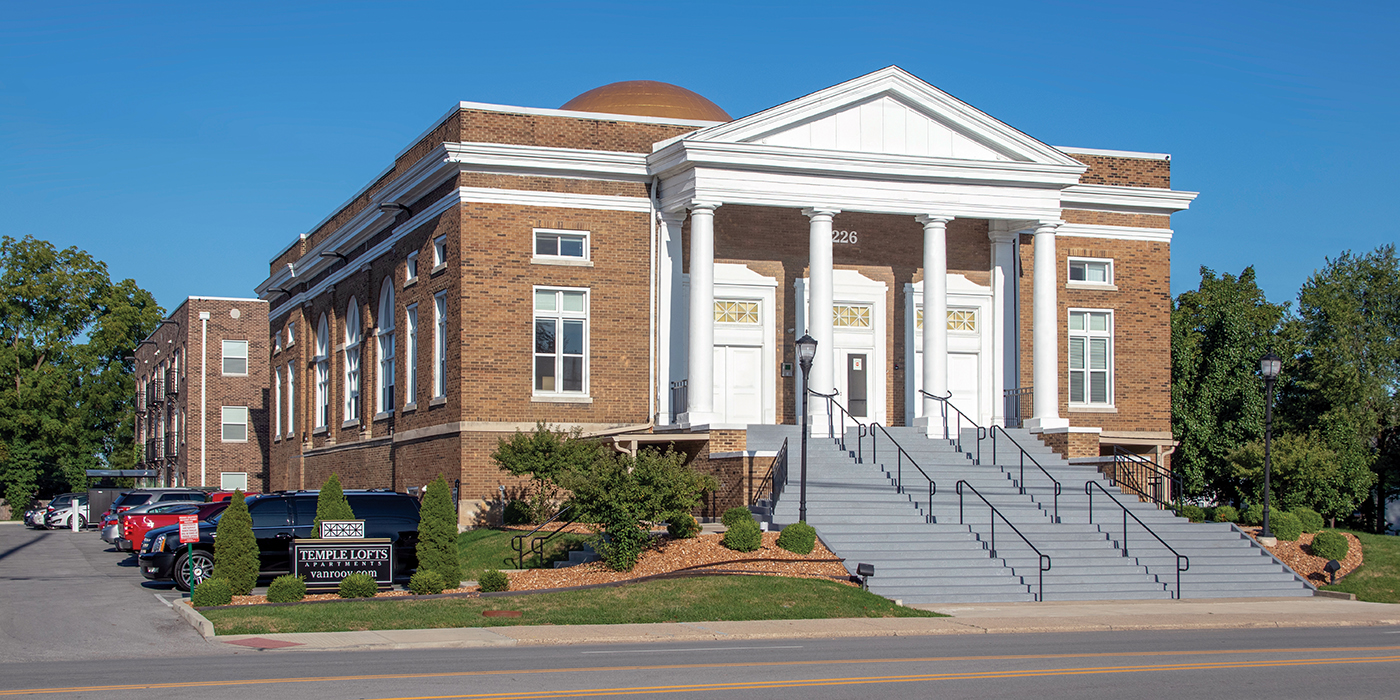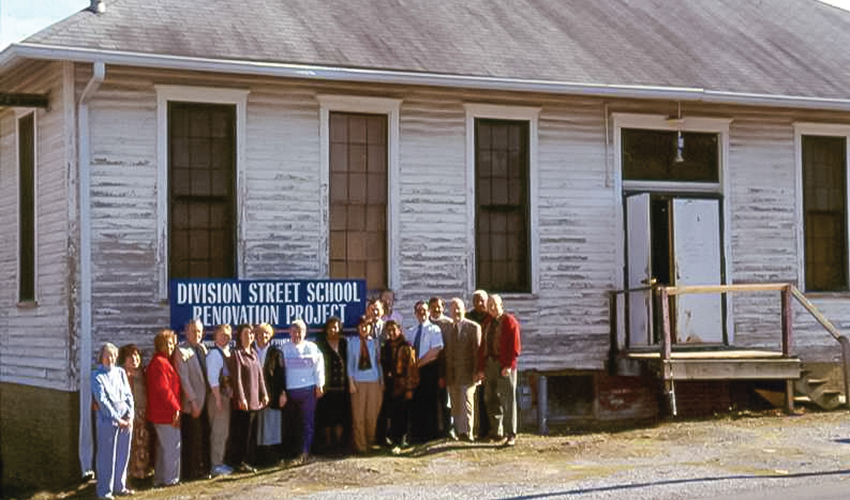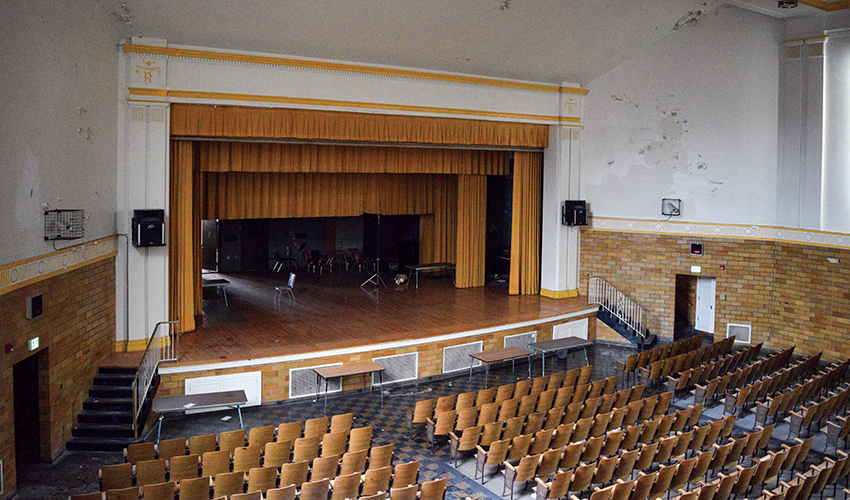NEWS
Expanding Preservation of African American Landmarks
Indiana Landmarks aims to broaden its vision and impact through a new Black Heritage Preservation Program.

Addressing Inequality
In 1992, Indiana Landmarks—then Historic Landmarks Foundation of Indiana—formed its African American Landmarks Committee to identify, save, and celebrate places significant to Indiana’s Black heritage. Thirty years later, we have pledged to expand the committee’s vision and impact by creating a Black Heritage Preservation Program. The initiative is a top priority in Indiana Landmarks’ 2021-2025 strategic plan, its purpose emanating from the plan’s first imperative: “Champion inclusion and accessibility, practice equity and embrace diversity, and use this as a lens through which we view all we do.”
For decades, Indiana Landmarks has partnered with local community leaders to identify African American sites around the state. Early in its history, the committee led a survey of Black heritage sites, documenting churches, settlements, lodges, schools, neighborhoods, and more. Indiana Landmarks has continued to aid endangered sites through our African American Heritage Grants Fund, by partnering with community leaders on fundraising and advocacy efforts, and by providing technical preservation advice. Since 2020, our African American Landmarks Committee has served as advisor to the Standiford H. Cox Fund of the Central Indiana Community Foundation, supporting the preservation, operation, and maintenance of historic Black sites across the state.

Through the Black Heritage Preservation program, Indiana Landmarks hopes to strengthen support for local partners, like the friends group that banded together in 1999 to save New Albany’s Division Street School (above c.2001).
These efforts have helped draw attention to significant places including Lyles Station in Gibson County, a free Black farming settlement dating to the 1850s. We gave rehabilitation advice and financial support to Lyles Station Historic Preservation Corporation in a years-long effort to save its crumbling Lyles Station Consolidated School. Now a museum telling the community’s story, the school has welcomed nearly 15,000 students since it opened in 2011. In Rushville, after the roof and ceilings collapsed at the long-vacant Booker T. Washington School, we joined with local church and civic leaders and Rush County Heritage to restore the 1905 school as a community center, lending money for a new roof and supporting fundraising.
Indiana Landmarks’ 10 Most Endangered list has highlighted threats to several Black landmarks around the state. In Indianapolis, the list helped raise the alarm about plans to demolish Phillips Temple for a parking lot, winning a reprieve that allowed Indiana Landmarks and community leaders to secure reuse of the building as 18 market-rate apartments. In Fox Lake near Angola, 10 Most Endangered status drew attention to Pryor’s Country Place, a house turned inn for Black vacationers who were not welcome at white resort communities. In Gary, we’re still seeking a solution for Gary Roosevelt High School, one of only three Indiana high schools built exclusively for African Americans but shuttered since 2019 by financial hardship and building maintenance issues.

Indiana Landmarks hopes to bring increased attention to threatened Black landmarks such as Gary’s Theodore Roosevelt High School (above), one of only three Indiana high schools built exclusively for African Americans and shuttered since 2019.
While such recognition has helped raise awareness and draw support, historic African American places still represent a small fraction of those landmarks recognized in formal programs such as the National Register of Historic Places. Of Indiana’s more than 2,000 places listed in the National Register, fewer than 25 are recognized for an association with Black history. Part of the inequality stems from the criteria used to choose which places qualify for recognition, criteria that places an emphasis on architectural significance and historical integrity—how closely a property resembles its original appearance. This standard has traditionally favored high-style architecture, leading more modest construction—such as the houses in many historic Black neighborhoods—to be overlooked. The National Park Service and state historic preservation offices are working actively to add sites associated with Black heritage to the National Register of Historic Places.
Among other goals, Indiana Landmarks’ Black Heritage Preservation Program aims to grow efforts to recognize African American heritage by identifying places and spaces that should be listed in the National Register and seeking to expand the definition of those eligible for designation to include places where little or no physical evidence remains. Along with raising the profile of such places, National Register, state, and local designations can qualify them for preservation funding. Through the Black Heritage Preservation Program, Indiana Landmarks also seeks to increase capital for preservation of historic African American landmarks around the state, and partner with community leaders in finding sustainable uses for them.
“Much progress has occurred in recognizing Black heritage, yet the contributions of Black people from the earliest days of Indiana’s settlement to the present are still seriously underrepresented among designated historic places and publicly accessible sites,” says Olon Dotson, chair of Indiana Landmarks’ African American Landmarks Committee. “A Black Heritage Preservation Program will position Indiana as a leader in honoring Black heritage while addressing a complicated past and promoting the powerful role that historic places play in telling the story of our state and nation.”
This article originally appeared in the March/April 2022 issue of Indiana Landmarks’ member magazine Indiana Preservation.
Stay up to date on the latest news, stories, and events from Indiana Landmarks, around the state or in your area.
